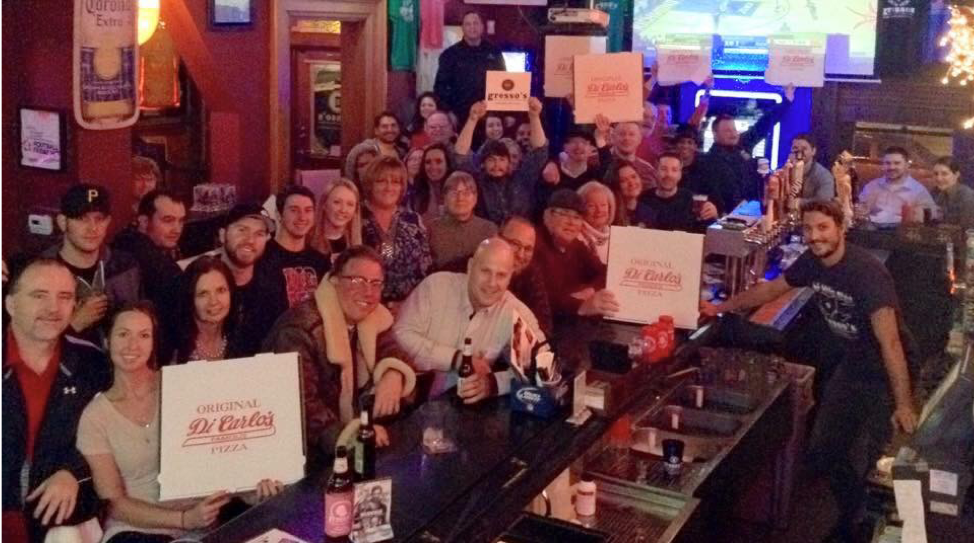
The bathrooms have been renovated and craft cocktails were added to the menu, but Carol’s Pub remains one of the last places in Chicago where you can buy a cheap Old Style and listen to country music until 5 a.m.
Once one of the many southern or country bars in the city’s Uptown neighborhood, Carol’s has weathered the changes around it and turnovers in ownership to stand out as one of the final remnants of Chicago’s “Hillbilly Heaven.”
The founders and previous owners of Carol’s—Ted and Carol Harris—moved to the city in the 1970s at the tail end of the mass migration that led thousands of Appalachians to northern industrial centers. They opened Carol’s to meet the demand for country music and featured live acts that reminded the patrons of music back home. But, by the mid-1990s, poor whites—and their black neighbors—were forced out of Uptown by gentrification and redevelopment. Today, Carol’s caters to a mix of country music fans and current Uptowners in search of something unique.

Those Appalachian-focused businesses are scattered across the industrial Midwest, stubborn remnant of history.
In southwest Detroit, Red’s Park Inn still survives after its heyday as a hub of activity. The Motor City was a major destination for wayward Appalachians during the 20th century. In fact, Walter Reuther, the longtime leader of the UAW, was a native of West Virginia.
Like Carol’s, Red’s was opened by Appalachian migrants and soon became a meeting point for the neighborhood’s southern and Appalachian newcomers. But while Appalachians were forced out of Chicago’s Uptown by redevelopment, the opposite was true in Detroit: As the city’s industrial heartbeat slowed, the neighborhood declined and many residents left for the suburbs or left the area entirely. Originally a Polish neighborhood before Appalachians and Southerners arrived, Central Americans now form the biggest migrant group in southwest Detroit.
Despite a shrinking clientele, or perhaps because of it, Red’s Motor Inn has become a refuge for Appalachian migrants and their children to feel at home. Many regulars, reportedly, don’t even drink much. They take a glass of water or two in order to enjoy socialization.
Today’s wayward mountaineers are unlikely to end up in Detroit, but rather move to neighboring states—or within their own states—outside Appalachia. West Virginians, for example, often gravitate toward Ohio, Pennsylvania, or Virginia. Those contemporary migrants (which includes the expatalachians team) do not settle in explicitly Appalachian neighborhoods, but still frequent restaurants or bars that remind them of home and meet other newcomers.
The closest Midwest hub, Columbus, Ohio, is within an hour of the Appalachian foothills and serves as a major destination for Appalachian migrants, especially young people from the Ohio Valley. While not exclusively an Appalachian bar, Gresso’s in the city’s Brewery District hosts a monthly “Ohio Valley Night” for those migrants who miss some local foods.
On the last Wednesday of each month, Gresso’s serves up Upper Ohio Valley staples such as DiCarlo’s pizza, Coleman’s fish, and Gulla’s hotdogs to a loyal following. The tradition started in the mid-2000s, thanks to the former owner’s West Virginia roots. The regular menu also offers a “Mountain Mama” sandwich and a “Wheeling Feeling” cocktail.

College football is often a rallying point for expats in their new homes. In cities without an Appalachian bar, establishments often host football watch parties for teams such as WVU, turning the bar into a “West Virginia bar” even if only for an afternoon. In the Washington, D.C. area, Ragtime Restaurant in Arlington, Virginia serves as the WVU hangout.
But leaving Appalachia isn’t only done for a better job. Many middle-class Appalachians want to leave to retire somewhere warmer. A popular destination for the golden years is Myrtle Beach, South Carolina, already a well-known vacation spot among Appalachians. Between the year-round retirees and summer tourists, plenty of them spend time at the beach, and local bars try to attract WVU football fans.
Myrtle Beach has two West Virginia bars: Sundown and the Club House. Those locations have become part of the yearly ritual for many West Virginians. Some people to Club House for the first time by its “West Virginia Rest Stop” sign.
Migrants often cluster around people and places that remind them of home. While immigrants brought ethic religious and fraternal organizations to Appalachia, some of their descendants later made Appalachian bars and clubs across the United States. Though the migration patterns have changed, those establishments keep a little slice of home within reach.
Subscribe to The Patch, our newsletter, to stay up-to-date with new expatalachians articles and news from around Appalachia.
Nick Musgrave first became fascinated with West Virginia’s history while growing up in Parkersburg. He continues to read, research and write on the Mountain State’s past from its birthplace in Wheeling. For more neat history and some political snark, follow him on Twitter: @NickMusgraveWV.

